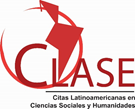Secuestro de carbono por el suelo y sus fracciones en agroecosistemas tropicales de la región costa ecuatoriana
Resumen
Con el objetivo de evidenciar la influencia de agroecosistemas tropicales (maíz, pastos, cacao, banano y bosque) ubicados en la región costa de Ecuador en los porcentajes de carbono total secuestrado por el suelo, y sus fracciones gruesa y ligera. El secuestro de carbono en el suelo es la remoción del carbono de la atmósfera mediante la fotosíntesis de las plantas y su almacenamiento como formas de materia orgánica estables y de larga vida en el suelo. Se determinó la cantidad total de carbono orgánico del suelo y las fracciones gruesas y ligeras por el método de Walkley-Black. El uso del suelo influye en el contenido de COT, los cinco agroecosistemas estudiados presentan valores diferentes en el secuestro de carbono. El suelo del cultivo de maíz obtuvo los valores más bajos, debido al exceso de labranza al que es sometido y textura arenosa; mientras los demás agroecosistemas mostraron mayor cantidad de carbono, correspondiendo al bosque los contenidos más altos. El agroecosistema de pasto, donde no se labra el terreno, presenta valores (aunque superiores) similares al maíz, debido posiblemente al sobre pastoreo a que es sometido. Las fracciones ligeras y gruesas de carbono del suelo presentaron una distribución similar al carbono total.
Palabras clave:
Carbono orgánico total del suelo, fracción gruesa, fracción ligera, degradación, región costa de Ecuador.
ABSTRACT
With the objective of evidencing the influence of tropical agro-ecosystems (corn, pasture, cocoa, banana and forest) located in the coastal region of Ecuador on the percentages of total carbon sequestered by the soil, and its coarse and light fractions. Soil carbon sequestration is the removal of carbon from the atmosphere through plant photosynthesis and its storage as stable and long-lived forms of organic matter in the soil. The total amount of organic carbon in the soil and the coarse and light fractions were determined by the Walkley-Black method. Soil use influences the TOC content, the five agro-ecosystems studied show different values in carbon sequestration. The soil of the maize crop obtained the lowest values, due to the excess of tillage to which it is subjected and sandy texture; while the other agroecosystems showed greater amount of carbon, corresponding to the forest the highest contents. The pasture agroecosystem, where the land is not tilled, shows similar values (although higher) to corn, possibly due to the overgrazing to which it is subjected. The light and heavy fractions of soil carbon showed a distribution similar to the total carbon.Keywords:
Total soil organic carbon, coarse fraction, light fraction, degradation, coastal region of Ecuador.Descargas
Publicado
Cómo citar
Número
Sección
Licencia
La editorial "Universo Sur", de la Universidad de Cienfuegos, publica el contenido de la Revista "Universidad y Sociedad" bajo una Licencia Creative Commons Atribución-NoComercial-SinDerivar 4.0 Internacional.
© Podrá reproducirse, de forma parcial o total, el contenido de esta publicación, siempre que se haga de forma literal y se mencione la fuente.










